Play therapy represents a cornerstone in the therapeutic intervention for children’s social development, offering a unique avenue for practitioners to address the complexities of social growth engagingly and effectively. As we consider the eight best play therapy techniques for social development, it is imperative to understand their application and how each can be strategically utilized to foster skills such as cooperation, emotional regulation, and social interaction. Techniques such as puppet play intervention and role-playing scenarios allow children to explore social dynamics in a controlled environment.
At the same time, structured games and group therapy sessions provide real-time social skill enhancement opportunities. The intricate balance of these approaches within a therapeutic setting prompts significant reflection on their efficacy and adaptability to individual client needs.
As professionals, we must scrutinize these methods for their immediate outcomes and long-term impact on a child’s ability to navigate the complex social landscapes they will encounter throughout their lives. The following discourse will shed light on how these play therapy techniques can be optimized for maximum benefit, offering a deeper insight into the mechanisms underpinning social growth in children.
Key Takeaways
- Puppet play intervention facilitates the expression of thoughts and emotions, allowing children to externalize their inner experiences using puppets.
- Role-playing scenarios enhance children’s ability to navigate social interactions and develop healthy coping mechanisms for real-life challenges.
- Structured games provide a dynamic and interactive way to hone social skills, teaching cooperation, patience, and empathy.
- Storytelling and narratives create a safe space for emotional exploration and expression, enhancing understanding of diverse perspectives and developing language skills.
Puppet Play Intervention
Recognizing that children often communicate more freely through play, puppet play intervention is a valuable tool to facilitate their expression of thoughts and emotions in a supportive and engaging manner. This child-centered approach enables young individuals to externalize their inner experiences using puppets as a medium, thereby transforming a conventional therapy session into a dynamic, safe space for growth and discovery.
Therapists utilize puppet play as a cornerstone among play therapy techniques, recognizing its power to help children explore complex feelings and navigate social landscapes. The tactile and imaginative nature of puppets invites participation and encourages children to project their emotions and scenarios onto the characters they animate. In doing so, they gain insights into their behaviors and develop crucial social skills that feel natural and unforced.
As children engage with puppet play intervention, they are not only practicing communication and emotional expression but are also learning to empathize with others and understand different perspectives. This nurturing environment that puppet play creates is instrumental in fostering resilience and adaptability. For caregivers and therapists dedicated to serving children’s emotional and social development, puppet play intervention emerges as a profoundly effective tool in the therapeutic repertoire.
Role-Playing Scenarios
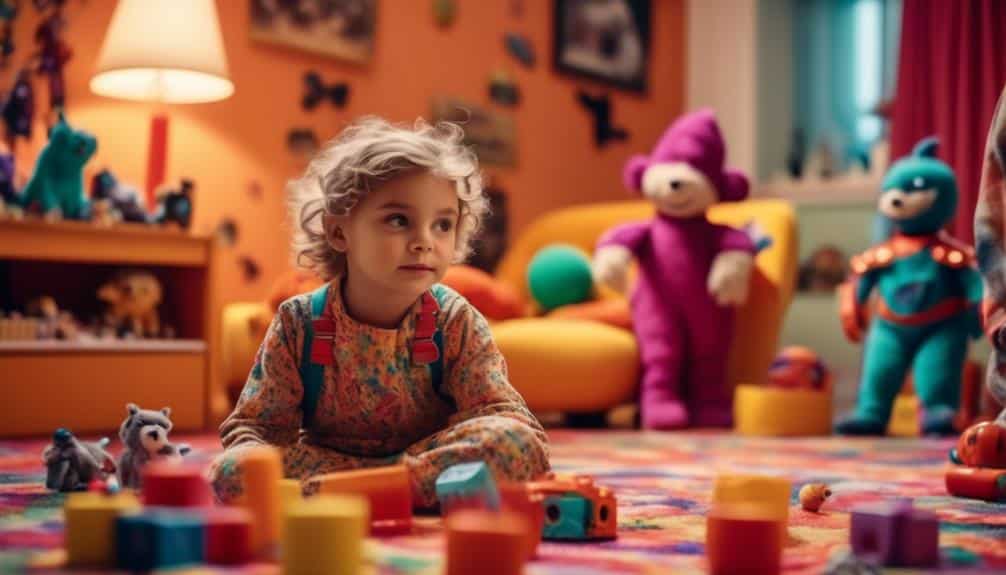
Building on the imaginative foundation laid by puppet play intervention, role-playing scenarios enhance a child’s ability to navigate social interactions by stepping into different roles to act out varied situations. Role-playing scenarios in Play Therapy Help children explore different perspectives and develop healthy coping mechanisms for real-life challenges. Through these scenarios, clients can express themselves and learn vital social skills in a safe and supportive environment designed by therapists.
Here are three key ways role-playing scenarios foster social growth:
- Empathy and Perspective-Taking: Children learn to understand and feel what others might be experiencing by embodying different characters, enhancing their empathetic abilities.
- Communication and Expression: Role-playing allows clients to communicate fears, frustrations, and feelings in a context where they can also practice resolving conflicts and articulating thoughts clearly.
- Confidence in Social Situations: Regular practice in these scenarios equips children with the confidence to navigate social dynamics, helping them deal with similar situations in their daily lives.
Therapists can create role-playing scenarios tailored to their client’s specific needs, making this technique a versatile tool in Play Therapy. It empowers children to face social challenges with resilience and adaptability.
Structured Games
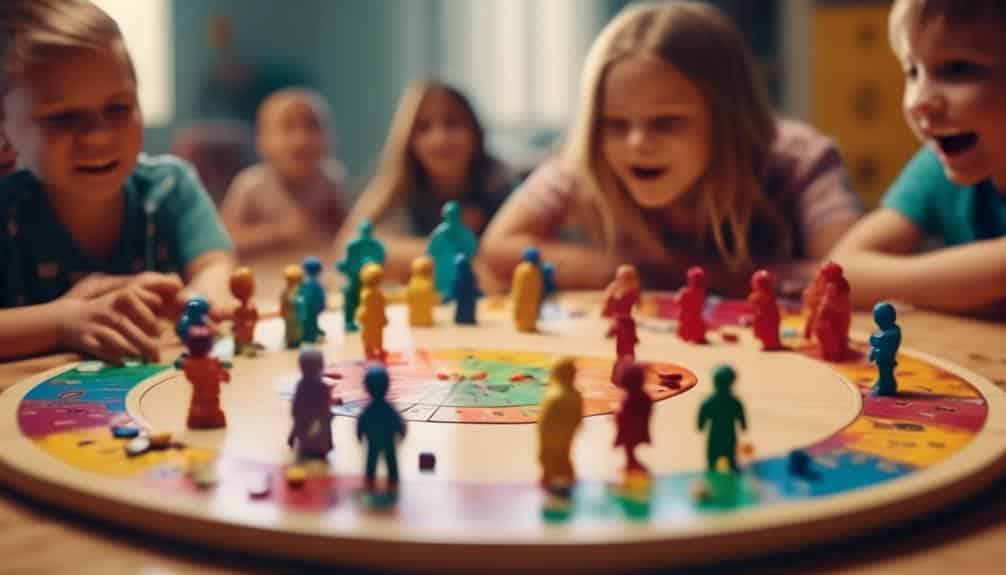
Structured games in Play Therapy offer a dynamic and interactive way for children to hone essential social skills within a structured and supportive environment. These carefully designed activities are more than mere play; they are therapeutic tools that help children express and navigate their emotions and relationships. By engaging in structured games, children learn valuable lessons in cooperation, patience, and empathy.
Cooperative games, a subset of structured games, require children to work together toward a common goal, teaching them the importance of teamwork and collective problem-solving. The precise rules and objectives in structured games offer a safe space for children to develop effective communication, understand the importance of following guidelines, and manage emotions like frustration when challenges arise.
During play therapy sessions, pediatric occupational therapists can observe and guide children through these games, facilitating discussions and reflections reinforcing social skills. Children learn more about play and its implications, so they build strategies to interact constructively with peers.
Storytelling and Narratives
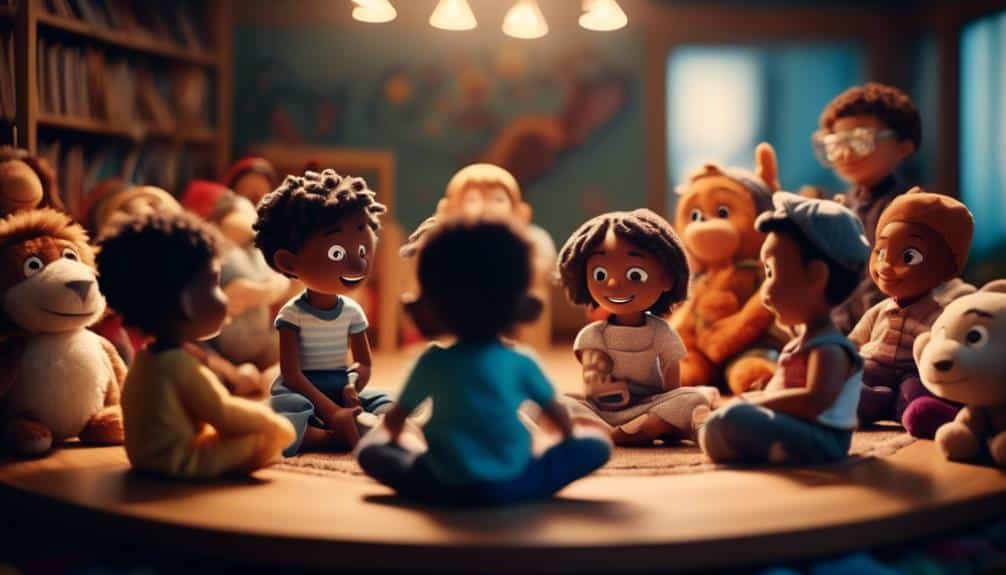
While structured games in play therapy lay the foundation for social skills and teamwork, storytelling, and narratives, offer a different avenue for children to express themselves and connect with their emotions. Play therapists use these techniques to create a safe and non-threatening space for individuals to explore and process their experiences.
Here’s how storytelling and narratives can be impactful in play therapy:
- Emotional Exploration: Allows the child to express their thoughts and feelings creatively, aiding in emotional processing and self-awareness.
- Social Understanding: Helps children understand diverse perspectives, fostering empathy and enhancing social skills through perspective-taking.
- Communication Growth: Engages clients in developing language skills and articulating their experiences, crucial for effective social interaction.
Storytelling and narratives in play therapy are powerful tools to help individuals navigate the complexities of emotions and social environments. They offer children a way to express their thoughts, understand their feelings, and communicate their experiences to others. This supports emotional and social development and helps the child develop a stronger sense of self and their place in the world.
Group Therapy Dynamics
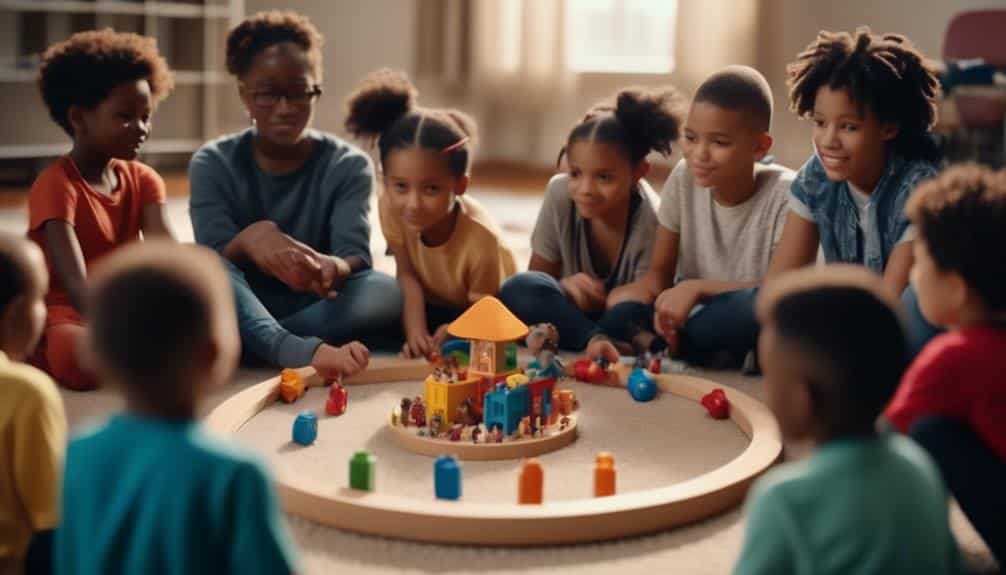
In play therapy, group therapy dynamics are pivotal, encouraging children to engage with one another, thereby honing their social skills within a supportive and collaborative environment. This therapeutic approach that utilizes the benefits of play therapy offers a unique space for young clients to express themselves and develop new relationships. It allows individuals to practice empathy and active listening—critical components in building connections and understanding others.
Creating opportunities for children to interact in group settings can significantly enhance their ability to develop coping skills. They learn to give and receive feedback, strengthening their sense of community and belonging. Moreover, group therapy dynamics are instrumental in teaching conflict resolution and assertiveness as participants navigate the complexities of differing perspectives and opinions.
Therapeutic Art Activities
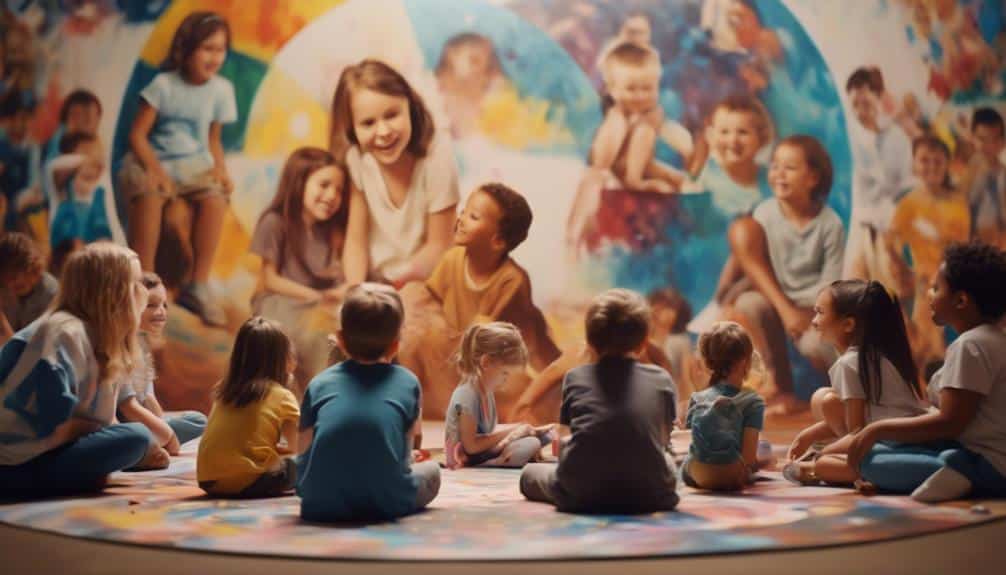
Therapeutic art activities offer many opportunities for children to articulate their inner thoughts and feelings through the transformative power of creative expression. In the therapeutic environment, these activities pave the way for emotional healing and verbal and non-verbal communication, allowing children to explore their inner world in a way that words alone may not capture.
To highlight the significance of therapeutic art activities, consider the following:
- Self-Expression and Emotion Regulation: Children learn to express complex feelings through art, building a visual and emotional vocabulary that aids in managing their emotions.
- Enhanced Communication: Art provides an alternate avenue for children who struggle with traditional verbal communication to convey their experiences and feelings, bridging gaps in understanding.
- Creative Exploration: In a safe space, children engage in pretend play and creative exploration, which fosters emotional growth and social development.
For any child engaged in therapy, these art activities are not just forms of play but are essential tools that allow them to communicate, express, and heal. They serve as a gentle yet powerful means for children to voice their feelings and stories, nurturing their emotional well-being and social skills in a compassionate and child-centered manner.
Emotion Identification Exercises
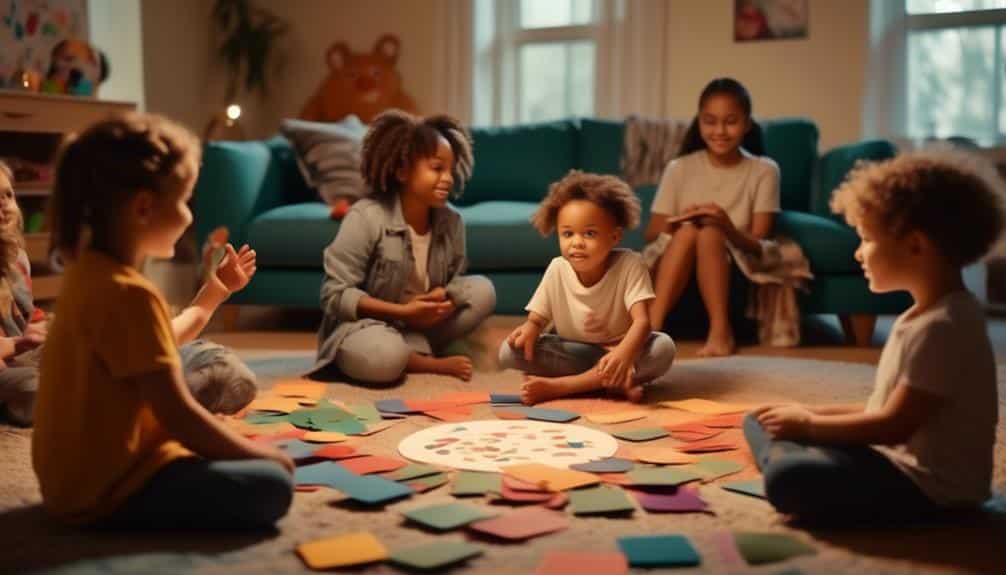
Understanding and communicating emotions is pivotal in a child’s social development. Children can gain essential skills in identifying and articulating their feelings through play therapy, such as recognizing emotional cues, engaging in facial expression role-play, and participating in emotion-matching games. These activities enhance their emotional literacy and foster empathy and connection with others.
Recognizing Emotional Cues
Emotion identification exercises serve as a cornerstone in play therapy, offering children a creative platform to explore and articulate their feelings and those of others. These exercises are crucial for personal emotional development and provide a foundation for social growth.
- Pictorial and Role-Playing Activities: Children can use pictures and dolls to identify and act out emotions, enhancing their ability to recognize emotional cues in themselves and their peers.
- Feeling Vocabulary Development: Children build a rich emotional lexicon through play, which helps them communicate their feelings more effectively.
- Emotion Naming for Management: By naming emotions, children learn to manage and respond to their feelings, fostering resilience.
Play therapy techniques like these are powerful, providing opportunities for clients to develop non-verbal communication skills and empathy, vital for healthy social interactions. This therapy is a form that allows individuals to express and process emotions constructively, use various techniques to aid in recognizing emotional cues, and ultimately help children navigate the complexities of emotional communication.
Facial Expression Role-Play
Building on the groundwork of recognizing emotional cues, Facial Expression Role-Play further empowers children to explore and convey their feelings through expressive mimicry. Play therapy techniques like this allow youngsters to learn about and use facial expressions to step into different roles and express their emotions. Engaging in play that involves mirroring and interpreting facial cues is enjoyable and beneficial for developing social skills.
This aspect of therapy offers a safe space for clients to engage with their emotions and the emotions of others, practicing empathy and enhancing communication. As children participate in these exercises, they become adept at identifying feelings and responding appropriately in social interactions, laying a foundation for emotional intelligence.
Emotion Matching Games
Diving into the world of Emotion Matching Games, children embark on an engaging journey to grasp better and articulate the vast spectrum of human emotions. These games are a cornerstone of play therapy, providing a safe space for clients to explore and express thoughts and feelings without pressure. Here are vital aspects to consider:
- Promotion of Emotional Intelligence: Children learn to identify and label emotions, fostering empathy and self-awareness.
- Tailored to Individual Needs: Activities are adaptable to support specific therapeutic goals and developmental stages.
- Enhanced Communication: Emotion Matching Games serve as a means for children to communicate complex emotions and gain insight into their own and others’ feelings.
Social Skills Group Play
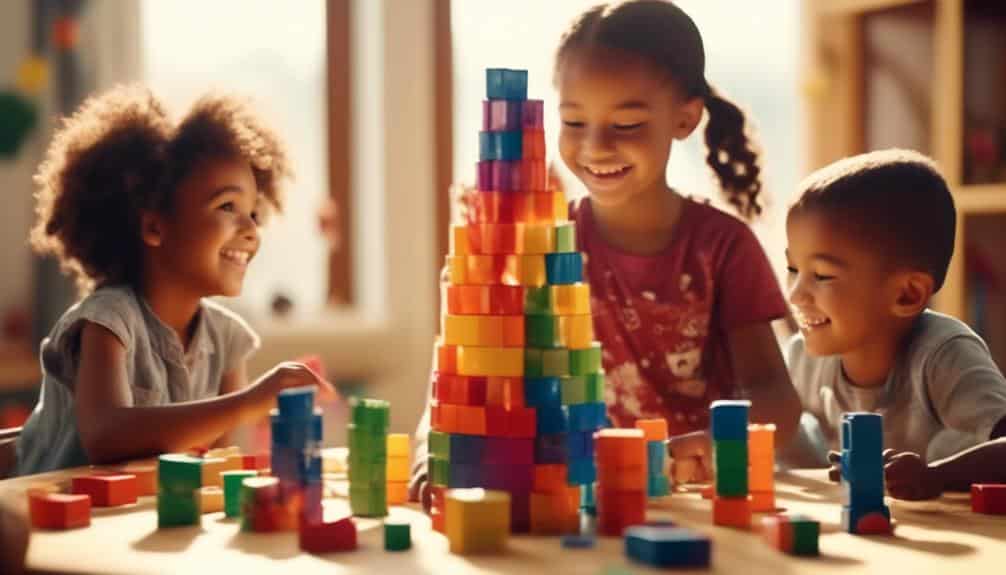
Transitioning from the individual focus of Emotion Identification Exercises, we now consider the collaborative dimensions of Social Skills Group Play. Through Structured Interaction Games, children learn the intricacies of cooperation and turn-taking, while Role-Play Scenarios allow them to step into different perspectives and practice communication. These activities are pivotal in creating a nurturing space where children can enhance their social competence and establish meaningful connections with their peers.
Structured Interaction Games
Structured Interaction Games in Social Skills Group Play serves as a bridge for children to navigate the complexities of social interactions by engaging them in activities that foster essential skills like cooperation and communication. Play therapy offers a supportive space where safe games create opportunities for clients to understand social cues and norms better. This powerful therapeutic approach combines various play therapy techniques within structured interaction games, promoting social growth through:
- We teach children to take turns and share, reinforcing the value of patience and generosity.
- We are encouraging effective communication to help express needs and understand others.
- Fostering teamwork, where children learn the importance of working together and supporting one another.
Role-Play Scenarios
Role-Play Scenarios in Social Skills Group Play is a dynamic tool that enables children to explore and master the complexities of social interactions in a controlled and guided setting. The power of play therapy shines through as the therapist creates a safe space for each child to express themselves and navigate social nuances. These scenarios allow children to engage with peers through therapeutic play, building confidence as they practice real-world interactions.
| Technique | Benefit |
|---|---|
| Use of Puppets | Facilitates emotional expression |
| Role-Play Scenarios | Enhances understanding of social cues |
| Therapist Creates Scenarios | Ensures a supportive environment |
| Allows Children to Express | Encourages verbalization of feelings |
| Therapy Involves Peers | Promotes empathetic skill-building |
Role-play scenarios foster personal growth and prepare individuals to express themselves with greater assurance in communal contexts.
Frequently Asked Questions
Does Play Therapy Help With Social Skills?
Yes, play therapy effectively enhances social skills, providing a structured setting wherein children can learn and practice interpersonal interactions, communication, and emotional regulation essential for social development.
What Play Therapy Techniques Help Kids With Social Skills?
Play therapy effectively enhances children’s social skills, utilizing interactive activities that foster communication, empathy, and emotional regulation, which are crucial for forming healthy interpersonal relationships.
What Are the Techniques of Play Therapy?
Play therapy employs a kaleidoscope of techniques, including art, sandplay, role-play, and storytelling, sensitively tailored to each child’s unique experiences and therapeutic needs to foster emotional literacy and behavioral development.
What Is Play Therapy in Social Work?
Play therapy in social work is a therapeutic approach that facilitates communication and emotional healing through play, aiding children and individuals in overcoming social difficulties and fostering healthy relationships.
Conclusion
Therapy for children is a practical approach to healing and growth in children. Child-centered play therapy, sand tray therapy, and art therapy are valuable tools that therapists use to encourage children to express their feelings, thoughts, and behaviors. Pediatric Occupational Therapists provide a safe and non-judgmental space for children to explore their emotions and develop positive growth. Play-based therapy activities, including therapeutic games and sensory play activities, help children develop social, problem-solving, and language skills. Therapists also offer support to parents and families, helping them understand their child’s stage of development and their unique needs.
Specialist therapists, such as those who work with children with autism spectrum disorder, post-traumatic stress disorder, or attention deficit hyperactivity disorder, have specialized training in the language of children and the therapeutic process. In therapy sessions, therapists use relaxation techniques, deep breathing, and positive reinforcement to help children express their emotions.
Therapy interventions can also address problematic behaviors and develop healthy relationships. Family and filial therapy are effective interventions therapists use to address family dynamics and social interactions. Traditional therapy and non-directive play therapy are also practical approaches for addressing mental health conditions and behavioral disorders.
The cost of therapy varies depending on the therapist’s rate and the type of therapy services offered. However, many therapists partner with health plans to provide mental health coverage for mental health emergencies and mental health treatment.
In conclusion, therapy for children is an essential and effective emotional healing and growth tool. Therapists use a variety of therapy techniques to create a supportive and therapeutic environment for children to express their feelings and develop their social and emotional well-being.

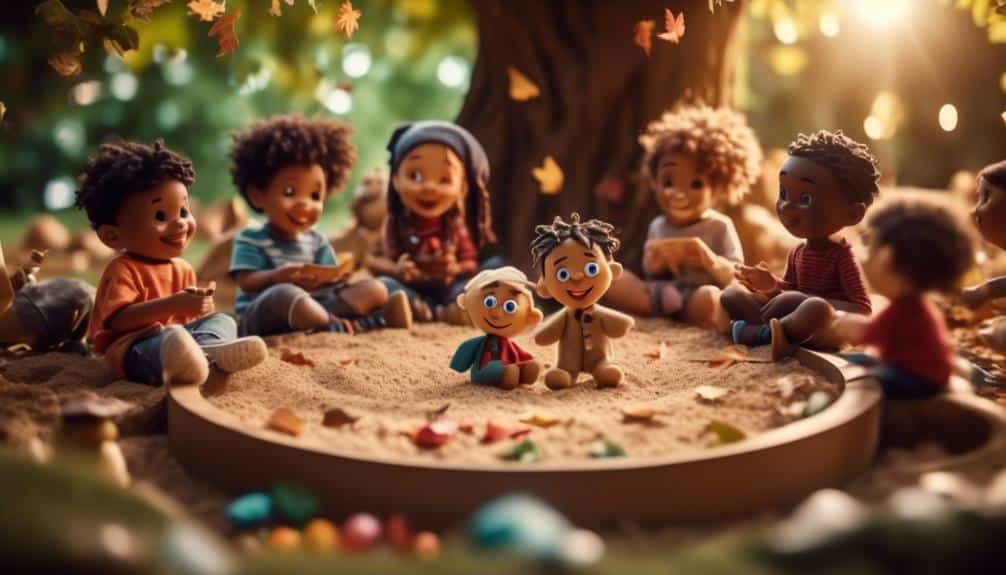
Recent Comments